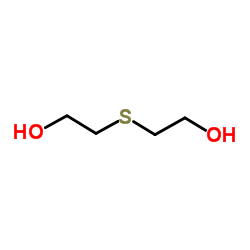Quantitation of the sulfur mustard metabolites 1,1'-sulfonylbis[2-(methylthio)ethane] and thiodiglycol in urine using isotope-dilution Gas chromatography-tandem mass spectrometry.
Anne E Boyer, Doris Ash, Dana B Barr, Carrie L Young, W J Driskell, Ralph D Whitehead, Maria Ospina, Kerry E Preston, Adrian R Woolfitt, Rodolfo A Martinez, L A Pete Silks, John R Barr
文献索引:J. Anal. Toxicol. 28(5) , 327-32, (2004)
全文:HTML全文
摘要
Sulfur mustard (HD), or bis(2-chloroethyl)sulfide, has several urinary metabolites that can be measured to assess human exposure. These metabolites include the simple hydrolysis product thiodiglycol (TDG) and its oxidative analogue, TDG-sulfoxide, as well as metabolites of the glutathione/b-lyase pathway 1,1'-sulfonylbis[2-(methyl-sulfinyl)ethane] (SBMSE) and 1-methyl-sulfinyl-2-[(methylthio)ethyl-sulfonyl]ethane (MSMTESE). Current methods focus on either the TDG or the b-lyase metabolites. We have developed a single method that measures products of both metabolic branches, with the reduced compound of SBMSE and MSMTESE, 1,1'-sulfonylbis [2(methylthio)ethane] (SBMTE), as the definitive analyte and TDG as a confirmation analyte. Sample preparation included b-glucuronidase hydrolysis for TDG-glucuronide conjugates, titanium trichloride reduction of sulfoxides to SBMTE and TDG, solid-phase extraction, and a chemical derivatization. We analyzed samples using gas chromatography-tandem mass spectrometry with quantitation using isotope-dilution calibration. The method limits of detection for TDG and SBMTE were 0.5 ng/mL and 0.25 ng/mL, respectively, with relative standard deviations of less than 10%. Urine samples from individuals with no known exposure to mustard agent HD had measurable concentrations of TDG, but no SBMTE was detected. The geometric mean concentration of TDG was 3.43 ng/mL, with concentrations ranging from < 0.5 ng/mL to 20 ng/mL.
相关化合物
| 结构式 | 名称/CAS号 | 分子式 | 全部文献 |
|---|---|---|---|
 |
硫双乙醇
CAS:111-48-8 |
C4H10O2S |
|
Quantitative structure-activity relationship and complex net...
2008-11-13 [J. Med. Chem. 51 , 6740-51, (2008)] |
|
Redox Regulation of Cell Contacts by Tricellulin and Occludi...
2015-11-01 [Antioxid. Redox Signal. 23 , 1035-49, (2015)] |
|
Developmental toxicity of thiodiglycol in Sprague-Dawley rat...
2007-01-01 [Int. J. Toxicol. 26(4) , 365-71, (2007)] |
|
Determination of thiodiglycol, a mustard gas hydrolysis prod...
2004-12-24 [J. Chromatogr. A. 1061(2) , 235-41, (2004)] |
|
The effect of mustard gas on the biological activity of soil...
2008-03-01 [Environ. Res. 106(3) , 289-95, (2008)] |